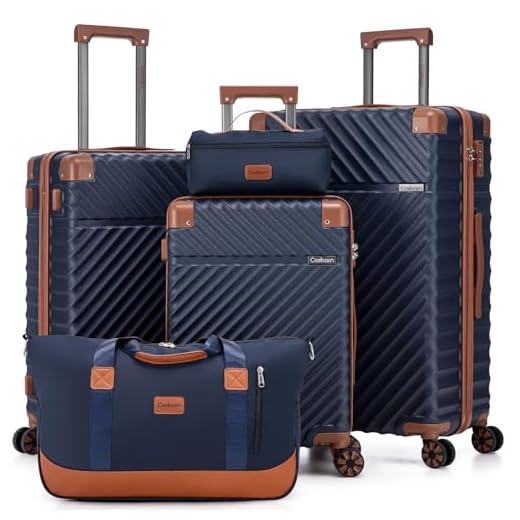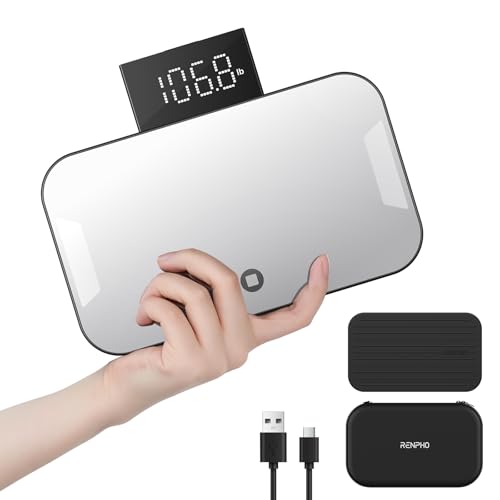



For those in the aviation industry, a high-quality roller bag stands out as a preferred choice, providing both durability and ease of maneuverability through crowded airports. Look for products made from robust materials that can withstand the rigors of frequent travel. Notably, bags featuring multiple compartments allow for organized storage of essentials, from uniforms to personal items.
Another key aspect is the size of the carry-on. Ensuring compliance with airline regulations is paramount; a bag with a maximum dimension of 22 x 14 x 9 inches typically fits the requirements. Opt for lightweight options that won’t add unnecessary burden during long shifts.
When it comes to backpacks, versatility is crucial. A design with padded straps and breathable materials enhances comfort, especially during lengthy layovers. Additionally, selecting models with side pockets can facilitate quick access to water bottles or travel documents.
Investing in a multifunctional accessories pouch can further streamline essential items, ensuring they’re easily at hand. Safety and security features, such as lockable zippers and RFID protection, are sought-after attributes that provide peace of mind during travels.
Preferred Gear for Flight Personnel
Flight attendants typically favor hard-shell wheeled suitcases for their durability and ease of transport. Choose models with spinner wheels to enhance maneuverability in tight airport spaces.
Key Features
- Size: Look for dimensions that comply with airline carry-on regulations. A capacity of around 40-50 liters is common.
- Compartments: Multiple pockets and compartments aid in organizing essentials, such as uniforms, documents, and personal items.
- Weight: Lightweight materials help avoid exceeding airline weight restrictions, facilitating easier handling.
Popular Brands
- Samsonite – Known for its reliability and various styles.
- Rimowa – Offers premium quality with stylish hard cases.
- Tumi – Features elegant designs with functional layouts.
Additional accessories like packing cubes are highly recommended for maximizing space and keeping items from shifting during transit. A versatile backpack or tote is also commonly carried for personal items and essentials needed during shifts.
Types of Cabin Crew Luggage: Rolling vs. Tote Bags
For efficient travel, rolling suitcases commonly provide ample storage with ease of mobility. Their wheels and telescopic handles reduce the strain of carrying heavy items, allowing for quick transitions through airports. Seek models with durable materials and robust zippers to withstand frequent handling.
On the other hand, tote bags offer versatility and flexibility. They make excellent carry-ons for short layovers or as additional storage for essentials such as documents, personal items, or a best backpacking waist pack. The direct access and lightweight nature of totes can be advantageous when needing to grab items swiftly.
When choosing between these two options, consider the travel frequency and personal preferences regarding organization and weight distribution. Combining both styles may also be beneficial; a rolling suitcase for the bulk of belongings paired with a tote for quick access to necessary items during the journey can optimize convenience.
Key Features to Look for in Cabin Crew Suitcases
Durability is paramount. Opt for materials like polycarbonate or ballistic nylon that withstand frequent handling and rough storage conditions.
Consider weight; a light suitcase maximizes packing capacity without exceeding airline limits. Look for options that weigh under 7 lbs (3.2 kg) when empty.
Size matters–select dimensions compliant with airline carry-on regulations. A width of around 22 inches (56 cm) and depth of 9 inches (22 cm) are commonly acceptable.
A spinner wheel system allows for effortless maneuvering in tight spaces. Four wheels enable multidirectional rolling, reducing strain on the wrists.
Evaluate organizers inside the bag. Multiple compartments help in keeping items tidy and accessible, easing the transition between various tasks.
Choose suitcases with expandability. Zippered extensions provide extra space for unplanned additional items without compromising on carry-on guidelines.
Consider options with built-in locks or features that allow for additional security measures. These are essential for protecting personal belongings during travel.
Look for water-resistant fabrics or coatings. This feature is useful in unexpected weather conditions, ensuring belongings remain dry.
Style and color can also be a factor; select a design that reflects personal taste while being easily identifiable on baggage claim belts.
Weight Limitations and Packing Strategies for Flight Attendants
To meet airline regulations, a maximum weight limit of 32 kg (70 lbs) is common for checked bags, while carry-ons are often restricted to 10-15 kg (22-33 lbs). These requirements necessitate strategic packing to maximize efficiency and compliance.
Packing Strategies
Prioritize versatile clothing to create multiple outfits. Use packing cubes to organize items and minimize space. Rolling clothes generally saves more space than folding, allowing for better utilization of suitcase capacity. Consider using compression bags for bulky items, such as jackets.
Limit the number of shoes; choose a pair that matches various outfits and consider wearing heaviest items during travel to save weight. Travel-sized toiletries are a must; opt for solid alternatives or refillable containers. Keep essential documents and personal items easily accessible in a designated compartment.
Tips for Weight Management
Check the weight of your bag before heading to the airport using a scale. Remove non-essential items, especially if your trip duration is short. Collaborate with colleagues to share resources, such as appliances or grooming supplies.
Always keep informed about specific airline regulations, as they may vary. Adjust your packing strategy based on the length of the layover and flight schedule, ensuring readiness for different climates and situations without overloading your bags.
Brand Recommendations for Cabin Crew Luggage
For a reliable travel experience, consider the following brands known for their quality and functionality:
| Brand | Key Features |
|---|---|
| Samsonite | Durable construction, lightweight, spacious compartments. |
| Travelpro | Specialized in airline industry needs, easy maneuverability, professional look. |
| Tumi | High-quality materials, stylish designs, RFID protection. |
| Rimowa | Premium aluminum and polycarbonate options, superior build quality, iconic design. |
| Victorinox | Multi-functional designs, Swiss engineering, lightweight yet sturdy. |
Assess personal needs before selection, as ease of use and practicality matter greatly. Integrating useful tools like the best hard water filter for washing machine can further enhance travel by ensuring hygiene on the go.
Maintenance Tips for Prolonging the Life of Travel Bags
Regularly clean and condition materials with appropriate products. For fabric bags, use a mild detergent and soft brush. Leather options benefit from specialized creams or oils to prevent drying and cracking.
Storage Practices
Store bags in a cool, dry place away from direct sunlight to avoid fading. Use dust covers or pillowcases to protect against dust and scratches. Avoid overpacking, which can distort the shape and structure over time.
Handling Recommendations
Always lift rather than drag to prevent wear on wheels and handles. Avoid placing heavy items on top to reduce pressure that can warp frames. Choose transport methods that minimize jostling and impacts.
Check zippers and seams regularly for signs of wear. Repair small damages promptly to prevent more significant issues. Consider reinforcing stress points with tape or adhesive patches if necessary.
Lastly, familiarize yourself with warranty policies. Many manufacturers offer repair services, which can extend the functional life significantly.
FAQ:
What type of luggage do cabin crew typically use during flights?
Cabin crew usually opt for wheeled suitcases or cabin bags that meet airline regulations for size and weight. These bags often have multiple compartments for organization and are designed for easy maneuverability in tight spaces, making them suitable for the various demands of cabin work.
Are there specific brands favored by flight attendants for their luggage?
Many flight attendants prefer brands known for their durability and functionality, such as Samsonite, Travelpro, and Rimowa. These brands offer luggage that can withstand the rigors of frequent travel, and they often include features like reinforced handles, multi-directional wheels, and lightweight materials that are ideal for cabin crew needs.
How does the choice of luggage affect the efficiency of cabin crew?
The choice of luggage can significantly impact a cabin crew member’s efficiency. Light and compact bags make it easier to move quickly through the airport and onboard the aircraft. Additionally, bags with various compartments help maintain organization, allowing crew members to access items quickly, which is critical during busy flight operations.
What features do cabin crew look for in their luggage for air travel?
Cabin crew typically look for luggage with lightweight materials, durability, and various compartments for easy organization. Features such as lockable zippers, reinforced wheels, and handles that can withstand heavy use are also important. Some may prefer bags that can be converted into backpacks for added convenience while on the go.
How do cabin crew manage their luggage while working?
Cabin crew typically manage their luggage by keeping it organized and easily accessible. During flights, they often use designated areas for their bags, ensuring they do not obstruct passenger movement. Crew members are trained to pack efficiently, using packing cubes or bags to separate uniforms from personal items, which optimizes space and minimizes the time spent looking for essentials during layovers.







